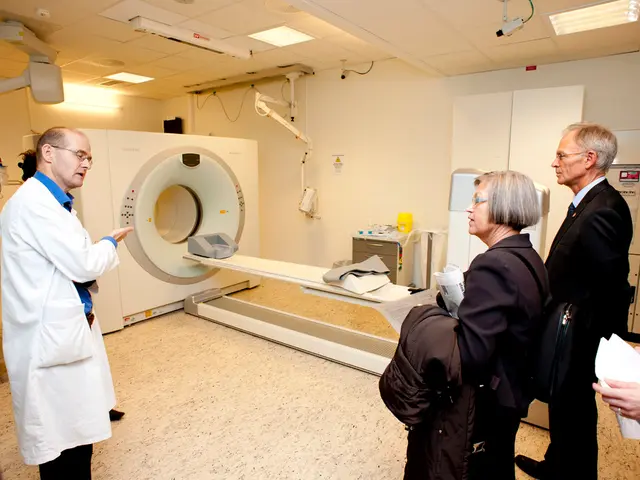Exploring therapeutic strategies for C3 Glomerulopathy (C3G)
Unleashing the Frontline in C3 Glomerulopathy (C3G): A Game-Changer Approach
C3G, a rare kidney condition, affects approximately 2-3 individuals per million. Characterized by the accumulation of protein within the kidney's filtering structures, this builds up over time, gradually impairing kidney function and potentially leading to kidney failure. As of now, there's no cure for C3G, but treatment aims to slow down its progression and support kidney health by suppressing the immune system.
New and promising therapies are emerging, revolving around disrupting the proteins at the root of C3G activity. Let's delve into the latest advancements reshaping the landscape of C3G treatment.
Advancements on the Horizon
- Iptacopan (Fabhalta): Iptacopan, a recently approved oral complement inhibitor, targets factor B (CFB) and suppresses the alternative pathway of the complement system. Shown to reduce proteinuria and improve kidney function in post-transplant patients with recurrent C3G, it's a step towardsmore effective treatment strategies.
- Pegcetacoplan: This prospective therapy focuses on targeting C3 and preventing its activation, with the aim of reducing disease activity inC3G patients. Currently in clinical trials, pegcetacoplan offers an exciting glimpse into the future of C3G therapy.
- Avacopan: Mainly used as a C5a receptor antagonist, avacopan's effectiveness in C3G has been somewhat inconsistent. Though it's shown some promise in maintaining remission in native C3G cases, its usefulness in recurrent cases remains questionable.
- Other Emerging Therapies: ARO-C3, danicopan, KP104, and narsoplimab are other promising treatments in development, each aiming to block the complement cascadeat different stages, providing an opportunity for better C3G management.
Apart from these treatments, background therapies such as renin-angiotensin-aldosterone system blockers (e.g., ACE inhibitors and ARBs) and SGLT2 inhibitors are widely recommended for C3G patients to support kidney health.
Challenges and Future Directions
- Kidney Transplantation: Transplantation remains the primary option for end-stage kidney disease (ESKD). Yet, C3G has a high recurrence rate following transplantation. New therapies may offer improved outcomes for individuals dealing with recurrent C3G post-transplantation.
- Personalized Treatment: Responses to certain therapies can vary greatly among individuals. Tailored treatment approaches based on individual circumstances are essential for optimal patient outcomes.
These pioneering therapies offer hope for C3G patients by directly targeting the disease's underlying mechanisms. As research continues to evolve, we stand on the brink of a new era in C3G management. Stay tuned for further advancements!
- Though C3G is a rare kidney disease, it remains an uncategorized medical-conditions that impacts numerous individuals, demanding the attention of science and medical professionals.
- The medical community is eagerly awaiting the potential impact of various scientific breakthroughs, including Iptacopan, Pegcetacoplan, and Avacopan, on the treatment of C3G, a chronic kidney disease.
- As cancer, respiratory conditions, digestive-health issues, eye-health complications, and neurological disorders garner significant focus in health-and-wellness discussions, so too should autoimmune-disorders like C3G.
- Cardiovascular-health and skin-conditions may not seem directly related to C3G, but the impact of immunosuppressive therapies and treatments on overall wellness cannot be ignored.
- The development of targeted therapies like Iptacopan, Pegcetacoplan, and Avacopan, in addition to other emerging treatments like ARO-C3, danicopan, KP104, and narsoplimab, opens the door for more effective management of C3G.
- While ACE inhibitors, ARBs, and SGLT2 inhibitors serve as background therapies for C3G patients, the future of C3G management lies in the prospect of personalized treatment approaches.
- Kidney transplantation, though currently the primary option for end-stage kidney disease, carries a high recurrence rate for patients suffering from C3G, making the exploration of new treatments crucial.
- With advancements in C3G therapies on the horizon, the landscape of medical-conditions, especially chronic-diseases, stands poised to be transformed, offering renewed hope for those affected by this rare kidney condition.








